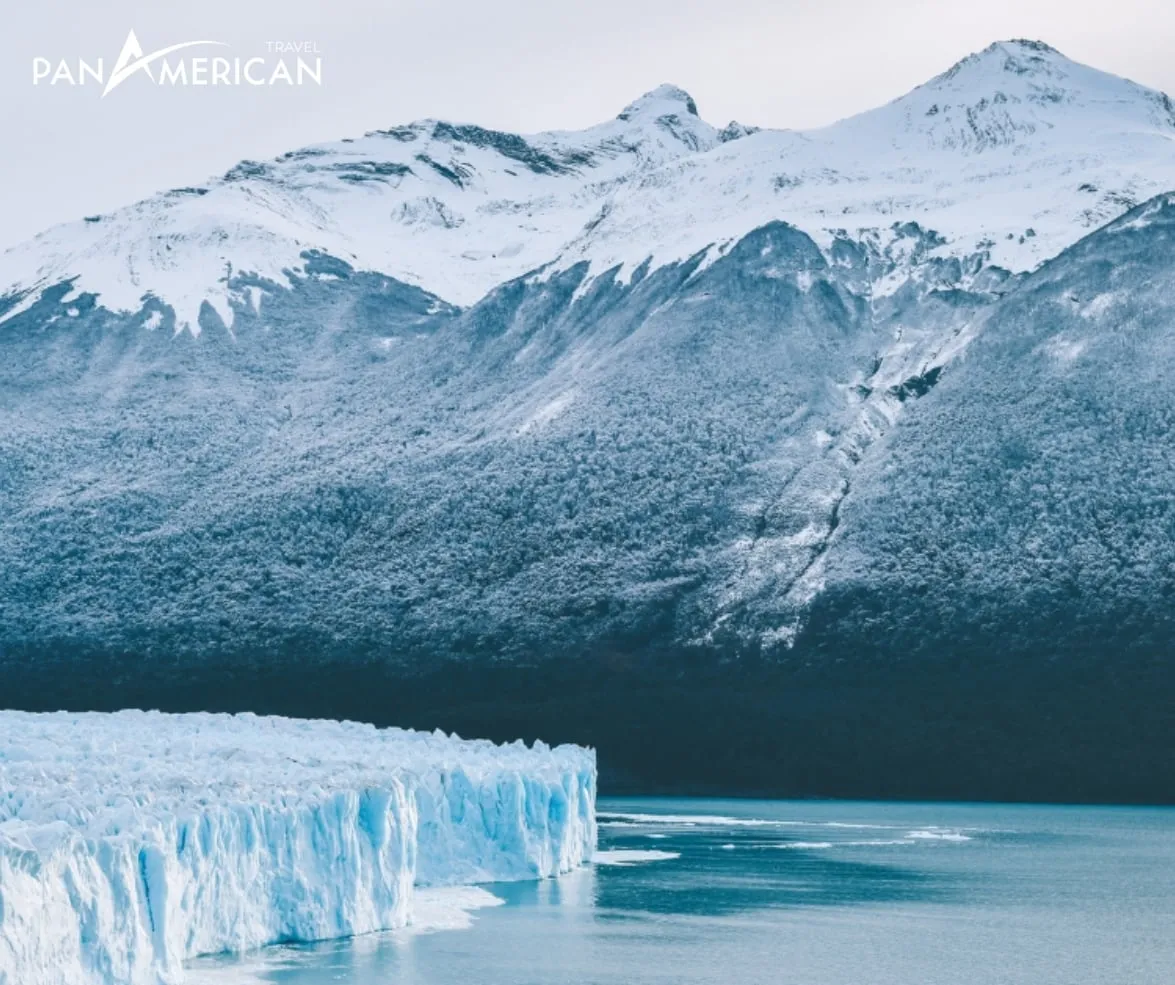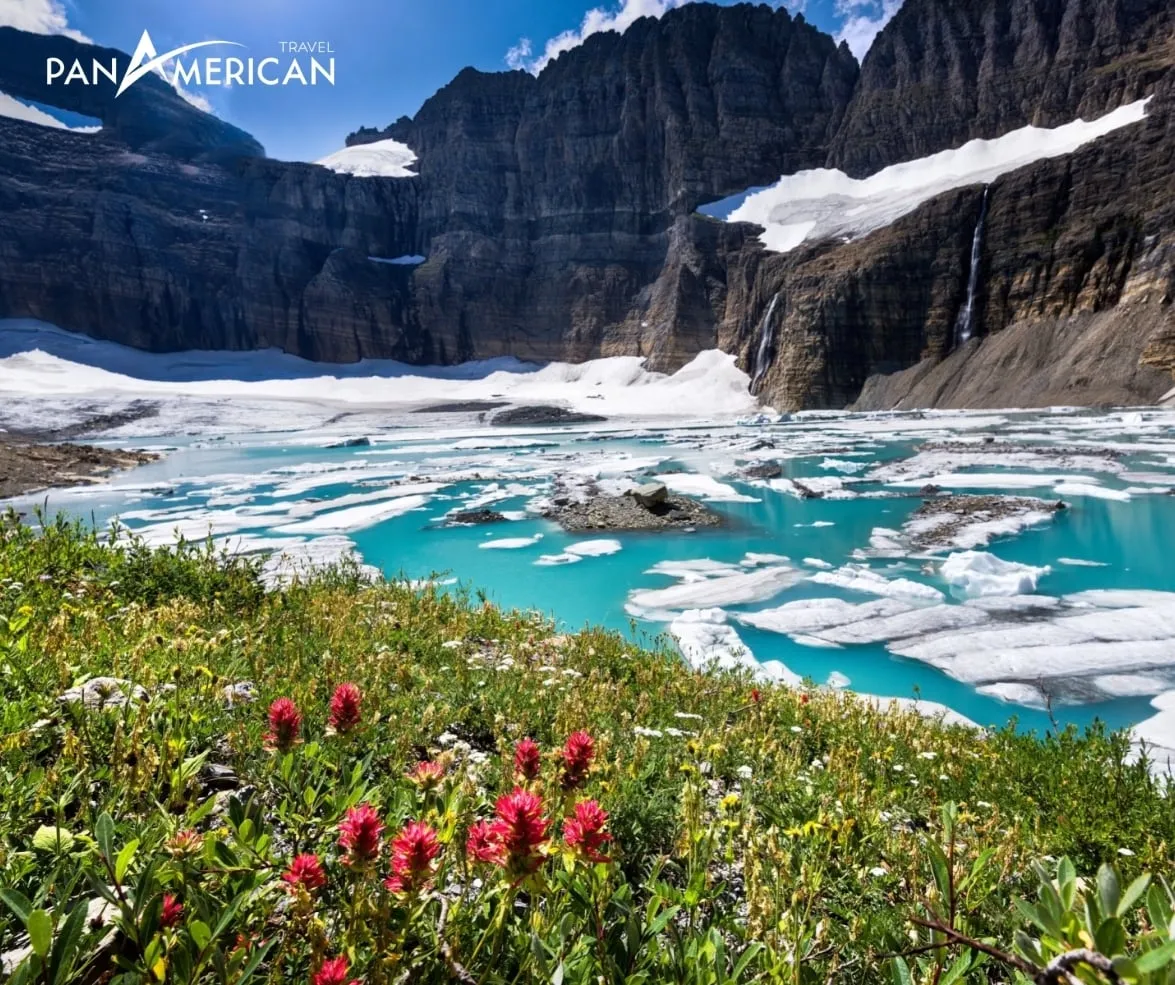Glacier National Park in Montana has long been renowned as a “gem” of the United States, a place where majestic peaks, magnificent glaciers, and diverse ecosystems converge. Beyond well-known destinations like Going-to-the-Sun Road or Lake McDonald, Glacier hides countless lesser-known treasures, including the Loon Lake Trail. This article provides a detailed guide to exploring the Loon Lake Trail, helping you conquer this beautiful route and fully discover the unspoiled beauty of Glacier.
Where is Loon Lake Trail and What Makes it Special?
Loon Lake Trail is located in the northwestern part of Glacier National Park, near the Canadian border, in the wild North Fork area, which is less explored than the central and eastern parts of the park. As a result, Loon Lake Trail offers a completely different hiking experience, more peaceful and closer to nature.
The most special feature of Loon Lake Trail is the stunning Loon Lake, a crystal-clear glacial lake nestled among vast pine forests and surrounded by imposing rocky mountains. The lake’s water color changes with light and weather, from turquoise to deep blue, creating a truly captivating scene.
Besides Loon Lake, along the hiking trail, you can also admire small waterfalls, babbling streams, diverse vegetation, and have the chance to encounter wildlife such as deer, elk, squirrels, and various bird species. Loon Lake Trail is an ideal choice for those seeking a moderate, less crowded hiking trail with stunning natural scenery.

Detailed Guide to Hiking Loon Lake Trail
General Information about Loon Lake Trail
- Location: North Fork area, Glacier National Park, Montana
- Starting Point: Parking area near Polebridge Ranger Station or from Bowman Lake parking area (via a connecting trail)
- Length: Approximately 13-14 km (8-9 miles) round trip
- Elevation Gain: About 300 meters (1000 feet)
- Difficulty: Moderate
- Hiking Time: 4-6 hours
- Terrain: Forest trail, rocky path, lakeside
- Scenery: Loon Lake, pine forests, small waterfalls, streams, mountains
- Ideal Time to Visit: Summer and early autumn (June – September)
How to Get to the Loon Lake Trailhead
To reach the Loon Lake Trailhead, you need to travel to the North Fork area of Glacier National Park. The most common way is by private car. From West Glacier, follow MT-486 (North Fork Road) north for about 26 miles (42 km) of dirt road to Polebridge Ranger Station. North Fork Road is unpaved, and can be rough and dusty, especially after rain. High-clearance vehicles or SUVs are recommended.
You can park at the parking area near Polebridge Ranger Station or continue a short distance to the Bowman Lake parking area and hike the connecting trail to Loon Lake Trail.
Note: The North Fork area is quite remote and has limited services, so you should prepare adequately with fuel, food, water, and necessary supplies before heading there.

Detailed Description of the Loon Lake Trail Route
Loon Lake Trail begins in the forest area near Polebridge Ranger Station and leads you deep into the North Fork wilderness. Initially, the trail passes through dense pine forest, is relatively flat, and easy to walk. After about 1-2 miles, the trail begins to gently ascend, interspersed with flat sections.
Along the way, you will cross a few small streams and may hear the sound of waterfalls echoing from afar. As you go deeper into the forest, the scenery becomes more pristine and tranquil. About halfway through the journey, you will reach an area with open views, where you can admire the majestic mountain scenery around you.
The final section of the trail is the steepest, but not too long. After overcoming this steep section, you will be surprised when Loon Lake appears before your eyes with its magical beauty. Loon Lake is nestled in a narrow valley, surrounded by forests and rocky mountains. You can walk around the lake shore to explore its beauty from different angles, or simply sit back, relax, and enjoy the fresh air.
After visiting Loon Lake, return via the same trail to end your hiking journey.

Interesting Experiences and Activities at Loon Lake Trail
- Hiking and Trekking: Loon Lake Trail is an ideal hiking route with a moderate length, moderate difficulty, and diverse natural scenery, suitable for many types of hikers.
- Admiring Loon Lake Scenery: Loon Lake is the highlight of the trail, where you can fully admire the beauty of the lake, take photos, and enjoy the peaceful atmosphere.
- Picnicking by the Lake: The shore of Loon Lake has many flat spots, ideal for stopping for a picnic and enjoying lunch amidst wild nature.
- Fishing: Loon Lake is home to many fish species. If you have a fishing license, you can try your hand at fishing here.
- Wildlife Watching: The Loon Lake Trail area is home to many wildlife species. You may have the opportunity to spot deer, elk, squirrels, birds, and other animals. Remember to keep a safe distance and do not feed the animals.
- Kayaking or SUP (possibly): If you bring an inflatable kayak or SUP, you can paddle on Loon Lake to explore the lake from a different perspective (check park regulations regarding boating on the lake).

Preparation and Safety Notes for Hiking Loon Lake Trail
Essential Items
- Hiking Boots: Choose specialized hiking boots that are comfortable, have good grip, and are waterproof.
- Hiking Backpack: A backpack of suitable size to carry enough essentials for a day hike.
- Water: Bring enough water, at least 2-3 liters per person, depending on the weather and your physical condition.
- Snacks: Pack energy-rich snacks such as protein bars, dried fruit, nuts, sandwiches, etc.
- Clothing: Wear comfortable, breathable, and moisture-wicking clothing. It is advisable to bring a windproof and waterproof jacket as mountain weather can change quickly.
- Sunscreen, Hat, Sunglasses: Protect your skin and eyes from the sun.
- Insect Repellent: The forest area has many insects, especially in summer.
- Map and Compass/GPS: Although the trail is quite clear, you should still bring a map and navigation device in case you get lost.
- First-Aid Kit: Bring a personal first-aid kit to treat minor injuries.
- Hiking Poles (optional): Hiking poles can help reduce stress on your knees and increase stability on steep terrain.
- Bear Spray: Glacier area is home to bears, carrying bear spray and knowing how to use it is a necessary precaution.
- Fishing License (if intending to fish): Purchase a fishing license at the park visitor center if you want to fish in Loon Lake.
Safety Precautions
- Check Weather Forecast: Before hiking, check the weather forecast to prepare clothing and plan accordingly.
- Hike in Groups: It is advisable to hike in groups of at least 2 people to support each other and ensure safety.
- Inform Others of Your Itinerary: Let relatives or friends know your hiking itinerary, including the route, and expected time of departure and return.
- Stay on the Trail: Always stay on marked trails, do not take shortcuts or go off-trail to avoid getting lost and endangering yourself.
- Be Aware of Wildlife: Keep a safe distance from wildlife, do not feed them, and do not approach too closely. If you encounter a bear, follow bear safety guidelines (e.g., make noise, back away slowly, use bear spray if necessary).
- Drink Enough Water and Eat Properly: Ensure you provide enough water and energy for your body throughout the hike.
- Pace Yourself and Rest Appropriately: Do not try to hike too fast or push yourself too hard, pace yourself and rest when needed.
- Pack Out Trash: Do not litter on the trail or at the lake area, pack out your trash and dispose of it properly.
- Follow Park Regulations: Learn and comply with Glacier National Park regulations regarding hiking, camping, campfires, and other activities.

Ideal Time to Hike Loon Lake Trail
The best time to explore the Loon Lake Trail is during summer and early autumn, from June to September. During this time, the weather is warm, with less rain, and the trails are dry and easy to walk. The natural scenery is also most beautiful in summer with lush greenery, wildflowers in bloom, and clear blue lakes.
However, summer is also the peak tourist season in Glacier National Park. The North Fork area may be less crowded than other areas, but you should still arrive early to find parking and avoid the midday heat.
If you hike in early autumn (September), you will have the opportunity to admire the brilliant golden autumn colors of the coniferous forests and enjoy the cool, fresh air.
Avoid hiking Loon Lake Trail in winter and spring as the trails may be icy, snow-covered, dangerous, and difficult to navigate.
Conclusion
Loon Lake Trail is a hidden gem of Glacier National Park, offering a wonderful hiking experience for those who love unspoiled and peaceful nature. With this detailed guide to exploring the Loon Lake Trail, hopefully you will have a successful and memorable hiking trip, fully discovering the beauty of Loon Lake and the North Fork area of Glacier. Prepare thoroughly, follow safety guidelines, and enjoy your journey of discovering the wonders of nature at Glacier National Park!